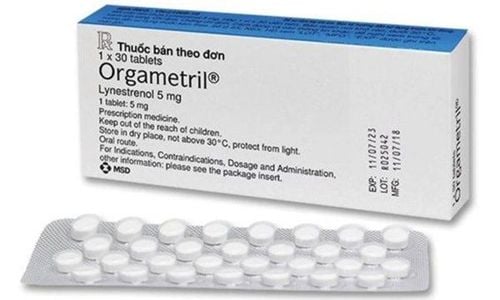This is an automatically translated article.
Tranecid 500 belongs to the group of hemostatic drugs with the main ingredient being tranexamic acid. Tranecid 500 is commonly used to treat and prevent bleeding associated with increased fibrinolysis in gynecological, urological, and hemorrhagic diseases.
1. What does Tranecid 500 do?
Tranecid 500 drug has the main ingredient tranexamic acid, which inhibits the fibrinolysis system, by inhibiting the activation of plasminogen to plasmin. Therefore plasmin is not produced. The specific effects of tranexamic acid are as follows:
Anti-plasmin effect: Tranexamic acid binds strongly to the lysine binding site, which has an affinity for fibrin and plasminogen to fibrin. Therefore, degradation by plasmin is strongly inhibited. In the presence of anti-plasmin agents, such as a2-macroglobulin, in the plasma, the antifibrinolytic effect of tranexamic acid is further enhanced. degradation of coagulation agents, etc., but even a slight increase predisposes fibrin-specific degradation to occur. Thus, in normal bleeding situations, the presence of tranexamic acid induces hemostasis by eliminating that fibrinolysis. Anti-allergic and anti-inflammatory effects: tranexamic acid inhibits kinin production and other active peptides... due to plasmin, can cause increased vascular permeability, allergic and inflammatory lesions Tranecid 500 is usually indicated in the following cases:
Abnormal bleeding during and after surgery Obstetrics and Gynecology, Urology, Hemorrhagic Diseases Short-term for prevention and local treatment of patients at high risk of bleeding during and after surgery (prostatectomy, removal of the cervix) , extraction of teeth in people with hemophilia, hematuria, menorrhagia, epistaxis,...) Treatment of bleeding complications due to thrombolytic therapy Treatment of hereditary angioedema Contraindications of Tranecid 500 These include:
Patients with hypersensitivity to tranexamic acid Patients with a history of thromboembolic disease Cases of central nervous system surgery Nervous system bleeding and subarachnoid hemorrhage or other bleeding in the brain
2. Dosage of Tranecid 500
Depending on the subjects and treatment goals, the dosage of Tranecid 500 will be different, specifically as follows:
Adults: 250-4000 mg/day, divided into 3-4 times The usual dose : take 2 tablets/time, 2-3 times/day Blood in urine: 2 tablets/time, 2-3 times/day until no more blood in urine Severe nosebleed: 2 tablets/time, 2-3 times /day for 3-4 days Menorrhagia: take 2 tablets/time, 2-3 times/day for 3-4 days Cervectomy procedure: take 2 tablets/time, 3 times/day for 12-14 day after surgery
3. Side effects of Tranecid 500
In some patients when using Tranecid 500 may experience side effects such as:
Digestive disorders: nausea, vomiting, diarrhea Dizziness Change in color perception in vision
4. Precautions when using Tranecid 500:
Some general notes when using Tranecid 500 include:
Caution when using Tranecid 500 for patients with renal failure due to the risk of tranexamic acid accumulation People with hematuria from the upper urinary tract, at risk of Intrarenal occlusion Bleeding from disseminated intravascular coagulation unless the disease is primarily due to a disorder of the fibrinolysis mechanism Persons with a history of thrombosis should not take tranexamic acid unless on concomitant anticoagulant therapy. tranexamic for pregnant women during the first months of pregnancy because teratogenic effects have been studied in animals Tranexamic acid is secreted into breast milk but the risk of adverse effects in children is unlikely. In normal doses, tranexamic acid can be used when needed for lactation. Do not take tranexamic acid with estrogens because of the potential for increased thrombosis. Caution should be taken when co-administering tranexamic acid with other hemostatic agents
Please dial HOTLINE for more information or register for an appointment HERE. Download MyVinmec app to make appointments faster and to manage your bookings easily.













